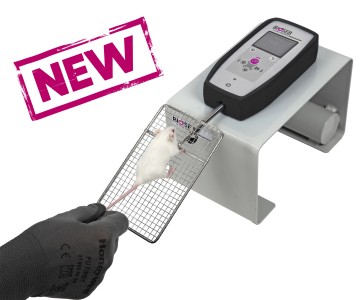Authors
Chen G, Masuda A, Konishi H, Ohkawara B, Ito M, Kinoshita M, Kiyama H, Matsuura T, Ohno K
Lab
Division of Neurogenetics, Center for Neurological Diseases and Cancer, Nagoya University Graduate School of Medicine, Nagoya, Japan
Journal
Sci Rep.
Abstract
Myotonic dystrophy type 1 (DM1) is caused by abnormal expansion of CTG repeats in the 3 untranslated region of the DMPK gene. Expanded CTG repeats are transcribed into RNA and make an aggregate with a splicing regulator, MBNL1, in the nucleus, which is called the nuclear foci. The nuclear foci sequestrates and downregulates availability of MBNL1. Symptomatic treatments are available for DM1, but no rational therapy is available. In this study, we found that a nonsteroidal anti-inflammatory drug (NSAID), phenylbutazone (PBZ), upregulated the expression of MBNL1 in C2C12 myoblasts as well as in the HSA(LR) mouse model for DM1. In the DM1 mice model, PBZ ameliorated aberrant splicing of Clcn1, Nfix, and Rpn2. PBZ increased expression of skeletal muscle chloride channel, decreased abnormal central nuclei of muscle fibers, and improved wheel-running activity in HSA(LR) mice. We found that the effect of PBZ was conferred by two distinct mechanisms. First, PBZ suppressed methylation of an enhancer region in Mbnl1 intron 1, and enhanced transcription of Mbnl1 mRNA. Second, PBZ attenuated binding of MBNL1 to abnormally expanded CUG repeats in cellulo and in vitro. Our studies suggest that PBZ is a potent therapeutic agent for DM1 that upregulates availability of MBNL1.
BIOSEB Instruments Used
Grip strength test (BIO-GS3)
Source :

 Pain - Thermal Allodynia / Hyperalgesia
Pain - Thermal Allodynia / Hyperalgesia Pain - Spontaneous Pain - Postural Deficit
Pain - Spontaneous Pain - Postural Deficit Pain - Mechanical Allodynia / Hyperalgesia
Pain - Mechanical Allodynia / Hyperalgesia Learning/Memory - Attention - Addiction
Learning/Memory - Attention - Addiction Physiology & Respiratory Research
Physiology & Respiratory Research











![Dynamic Weight Bearing 2.0 – Postural Module [Add-on]](https://bioseb.com/733-home_default/dynamic-weight-bearing-20-add-on-postural-module.jpg)
























 Pain
Pain Central Nervous System (CNS)
Central Nervous System (CNS) Neurodegeneration
Neurodegeneration Sensory system
Sensory system Motor control
Motor control Mood Disorders
Mood Disorders Other disorders
Other disorders Muscular system
Muscular system Joints
Joints Metabolism
Metabolism Cross-disciplinary subjects
Cross-disciplinary subjects CONFERENCES & MEETINGS
CONFERENCES & MEETINGS 